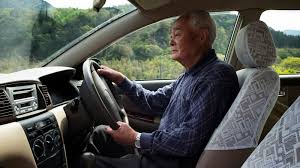There’s some interesting bits in this Bloomberg article regarding Japan’s older drivers. After a high profile road accident last year involving an 89 year old former senior bureaucrat that resulted in the death of a mother and child, safety features have taken even greater importance amongst the Japanese car manufacturers. As an aside, it was also interesting to read that in the wake of the accident, roughly 350,000 drivers over 75 voluntarily handed their licenses back in.
Japanese car manufactures are now under increased pressure from regulators to develop better safety features. Japanese domestic manufacturers are not only trying make the cars more user friendly for the elderly but they are also introducing technologies that will be mandatory on all new (domestic) cars built from this year, such as advanced automatic braking systems.
Toyota has upgraded its Safety Sense system which is designed to prevent front-end collisions while also providing better lane-keeping assistance. Another feature to the new system is its ability to detect oncoming obstacles if a car is making a turn from a stationary position at an intersection. As an aside, if this feature also detected obstacles that were behind (ie bicycles) it would certainly be a beneficial safety feature for lorries/HGVs turning at intersections that otherwise have blind spots.
Meanwhile, Subaru has introduced “Eyesight“ which involves stereo cameras – two lenses with a separate image sensor for each that creates a 3D image that looks ahead and using AI, assigns meaning to each object, infers the risk, and then warns the driver of any danger. The company claims that the system has led to 61% fewer crashes and 85% fewer rear-end accidents.
Lastly, Nissan has their Pro-Pilot system that boats similar autonomous driving features as both Subaru and Toyota’s such as lane changing and slowing down for toll booths. Despite the increased level of safety technology available in these cars that inevitably leads to higher sticker prices, domestic showroom sales people are being instructed to advise potential customers that none of these features are fool proof.
It was interesting that there was no mention of Level 5, fully-autonomous, driving vehicles from any of the Japanese car manufacturers. This probably underlines the notion that we are light years away from ever getting to the mass-adoption of fully-autonomous driving. Despite all this I can’t help but think that in the interim a simpler solution to prevent accidents amongst the elderly should probably start with a simple night-time driving ban, no?



